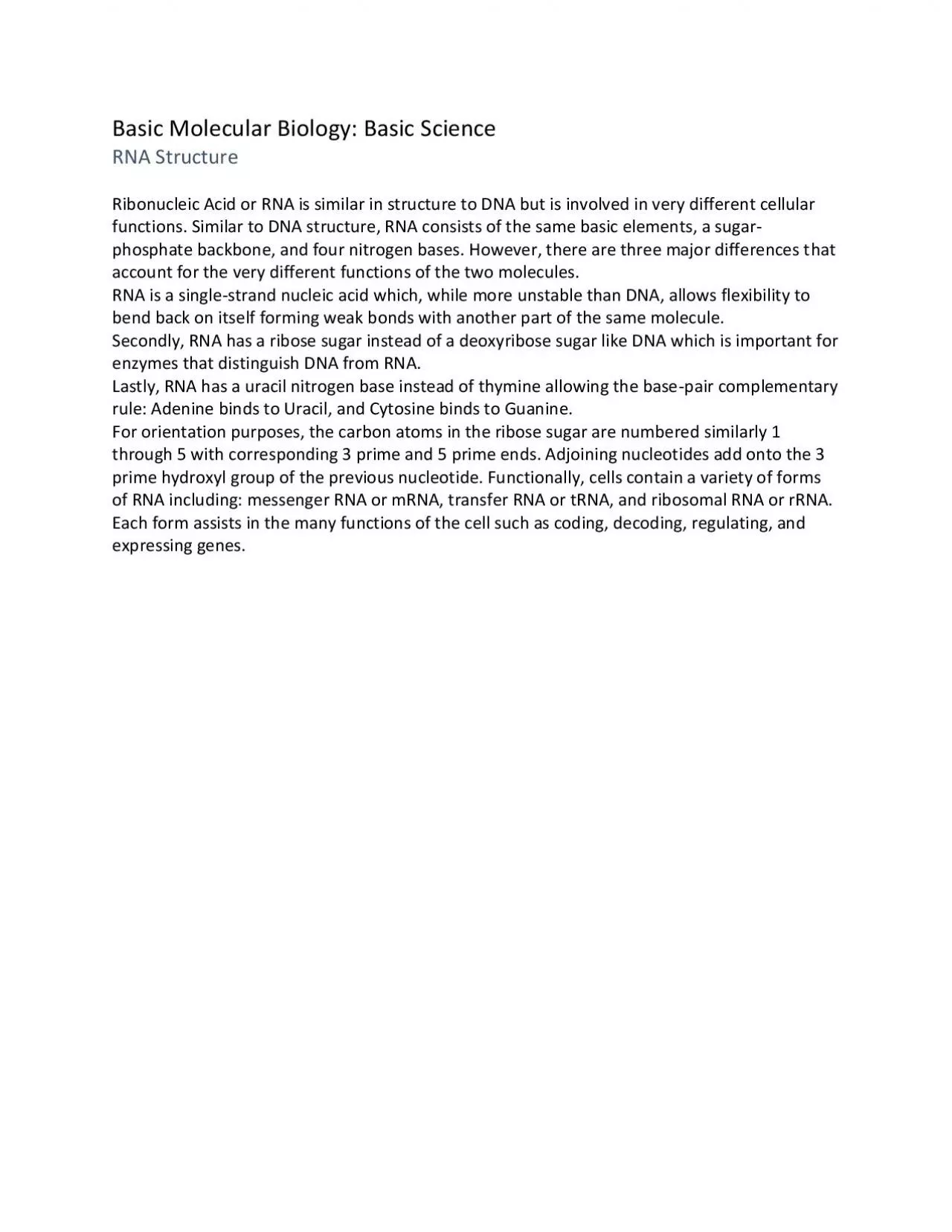

RNA Structure Ribonucleic Acid or RNA is similar in structure to DNA but is involved in very different cellular functions Similar to DNA structure RNA consists of the same basic elements a sugar ID: 937813
Download Pdf The PPT/PDF document "Basic Molecular Biology Basic Science" is the property of its rightful owner. Permission is granted to download and print the materials on this web site for personal, non-commercial use only, and to display it on your personal computer provided you do not modify the materials and that you retain all copyright notices contained in the materials. By downloading content from our website, you accept the terms of this agreement.
Basic Molecular Biology: Basic Science RNA Structure Ribonucleic Acid or RNA is similar in structure to DNA but is involved in very different cellular functions. Similar to DNA structure, RNA consists of the same basic elements, a sugar - phosphate backbone, and four nitrogen bases. However, there are three major differences t hat account for the very different functions of the two molecules. RNA is a single - strand nucleic acid which, while more unstable than DNA, allows flexibility to bend back on itself forming weak bonds with another part of the same molecule. Secondly, RNA has a ribose sugar instead of a deoxyribose sugar like DNA which is important for enzymes that distinguish DNA from RNA. Lastly, RNA has a uracil nitrogen base instead of thymine allowing the base - pair complementary rule: Adenine binds to Uracil, and Cyt osine binds to Guanine. For orientation purposes, the carbon atoms in the ribose sugar are numbered similarly 1 through 5 with corresponding 3 prime and 5 prime ends. Adjoining nucleotides add onto the 3 prime hydroxyl group of the previous nucleotide. Fu nctionally, cells contain a variety of forms of RNA including: messenger RNA or mRNA, transfer RNA or tRNA, and ribosomal RNA or rRNA. Each form assists in the many functions of the cell such as coding, decoding, regulating, and expressing genes.